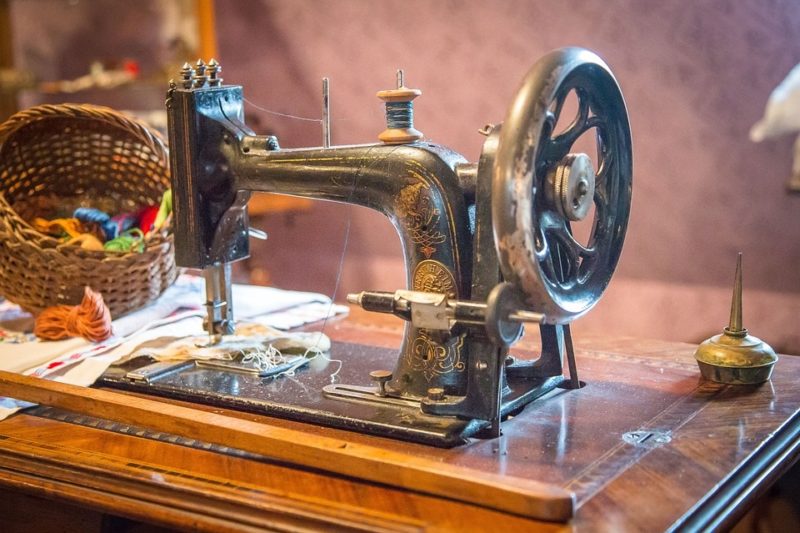If you want to know how to repair sewing machine at home, you can benefit from knowing the solutions for four common issues. We’ll also talk about what to do when your machine stops sewing. And best of all, all these fixes should still be relatively easy for someone who’s not that knowledgeable with tools.
In addition to reading this article, please check out how to service a sewing machine. It talks about other practices that you can do to troubleshoot your unit.

How Do You Fix A Sewing Machine Problem?
Noisy sewing machine
If you notice your sewing machine making unusual noises, one of the common reasons is entangled threads on the hook mechanism. Check this part of the sewing machine and remove the threads caught between the hook race to solve the issue. It would also help to learn how to clean a sewing machine in general since debris and buildup of threads and lint can cause other issues on the sewing machine’s performance.
Thread breaking
Does your upper thread keep breaking? You may need to check how you threaded the sewing machine or the needle itself for issues. For example, improper installation of the needle or even the usage of the wrong, blunt, or bent needle can cause the upper thread to break. You also want to check if your tension discs or take-up spring have no issues.
What if it’s the lower thread that keeps on breaking? Consider checking the thread tension if it is too tight. You also want to ensure that you thread the bobbin correctly and there is no knot on the thread or other foreign objects under the tension spring of the bobbin case.
Needle breaking
It can be frustrating to see your needle constantly breaking in the sewing machine. According to Brother, you can avoid this by ensuring that you’re using the correct needle size to the thread and fabric. The needle should also have no damages, meaning it isn’t bent or blunt.
If you can’t replace the needle yet, please learn how to sharpen a sewing needle to keep it efficiently poking through the material. And finally, install the needle correctly so that it is pushed as far as possible into the clamp with the flat side facing the back.
Stitches vary
If the stitch size varies or you notice the unit skipping stitches, there are many potential reasons that you can solve. For example, the tension and pressure might be incorrect, or you need to adjust the sewing machine’s throat plate. You also want to check the feed dogs because lint might’ve accumulated.
If you’re frustrated about why your sewing machine skips stitches, find out the reasons and how to solve them in our separate discussion.
Why Is My Machine Not Sewing?
Your sewing machine may fail to sew if you’re demanding too much from its expected capacity. Remember that various materials and projects will require specific threads, needles, and even presser feet. For example, leather is a challenging fabric, and you’ll need to use an even-feed foot plus a polyester thread to ensure that the machine can work on it.
You might also encounter the sewing machine starting but stopping when sewing. First, check if you did not accidentally lower the buttonhole lever and that the needle and bobbin winding spindle are in their correct positions. For some units such as Singer, you can turn the handwheel towards you to set the needle to the highest level, then press the reverse button to reset the sewing machine.
How Do You Fix A Sewing Machine That Will Not Move?
The sewing machine may suddenly stop moving if you’ve been using it for a long time. This is because the motor may have overheated, especially if the unit continuously runs at low speed. Stop the machine and turn it off to cool down for at least 20 minutes to solve this.
What if the sewing machine is not sewing even if the light is working? Sewing machines won’t work and move if it is in the bobbin winding mode. You also want to inspect if the foot pedal is working among other parts, such as the needle and presser foot of the sewing machine.
Does your sewing machine freeze? We found three methods to unfreeze a sewing machine.
Why Isn’t My Sewing Machine Catching The Bobbin Thread?
It’s frustrating when the sewing machine won’t pick up the bobbin thread. However, you can solve this issue by ensuring that the bobbin-winding spindle is in the correct position to the left so the needle will pick up the bobbin thread. And if this doesn’t fix it, it might be from the wrong installation of the bobbin or needle.
For more tips, here is how to put a needle in a sewing machine. Of course, you must know how to put these parts correctly, or the device won’t work smoothly.
Conclusion
And that’s it! We discussed how to repair sewing machine at home, and the four most common issues are noises, needle or thread breaking, and inconsistent or poor stitch quality. We also talked about troubleshooting and fixing a sewing machine not working or moving.
In general, proper cleaning and installation can solve most issues. Then, consult the product manual to know what to do with your specific unit.
